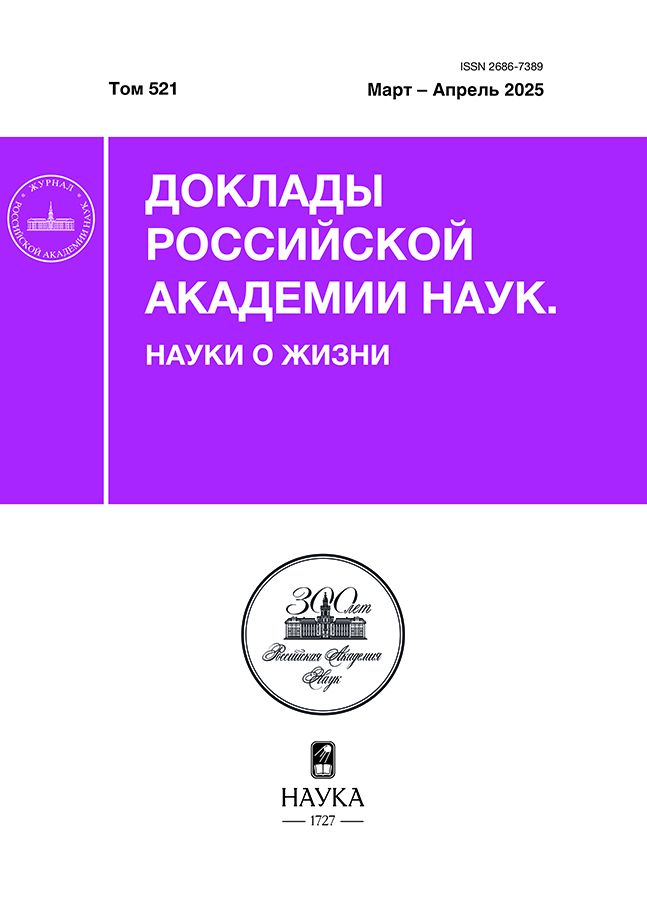Increasing the accumulation of modular nanotransporters in mouse tumors by attaching polyethylene glycol to these nanotransporters with the possibility of its release into the tumors
- Autores: Khramtsov Y.V.1, Ulasov A.V.1, Slastnikova T.А.1, Georgiev G.P.1, Sobolev A.S.1,2
-
Afiliações:
- Institute of Gene Biology, RAS
- Lomonosov Moscow State University
- Edição: Volume 521, Nº 1 (2025)
- Páginas: 214-218
- Seção: Articles
- URL: https://cijournal.ru/2686-7389/article/view/684009
- DOI: https://doi.org/10.31857/S2686738925020089
- ID: 684009
Citar
Texto integral
Resumo
Previously, polypeptide constructs – modular nanotransporters (MNT) – were created to deliver biologically active molecules into the nuclei of melanoma cells. In the present work, polyethylene glycol (PEG) molecules were attached to them at the N-terminal cysteine, both with the possibility of their subsequent cleavage at the hydrolysis site of tumor-specific proteases, and without this site (non-detachable PEG). All MNT variants labeled with the radioisotope 111In were administered to mice with inoculated Cloudman S91 melanoma. The kinetics of radioactivity distribution in the mouse body was studied using single-photon emission computed tomography. Analysis of the obtained data using a compartmental mathematical model allowed us to establish that the attachment of PEG to MNT increased its lifetime in the blood and significantly increased its accumulation in the tumor. Addition of a PEG detachment site by tumor-specific protease led to a strong retention of this MNT in the tumor. The data obtained can serve as a basis for the creation of new effective antitumor drugs.
Texto integral
Sobre autores
Y. Khramtsov
Institute of Gene Biology, RAS
Autor responsável pela correspondência
Email: alsobolev@yandex.ru
Rússia, Moscow
A. Ulasov
Institute of Gene Biology, RAS
Email: alsobolev@yandex.ru
Rússia, Moscow
T. Slastnikova
Institute of Gene Biology, RAS
Email: alsobolev@yandex.ru
Rússia, Moscow
G. Georgiev
Institute of Gene Biology, RAS
Email: alsobolev@yandex.ru
Academician of the RAS
Rússia, MoscowA. Sobolev
Institute of Gene Biology, RAS; Lomonosov Moscow State University
Email: alsobolev@yandex.ru
Corresponding Member of the RAS
Rússia, Moscow; MoscowBibliografia
- Slastnikova T.A., Rosenkranz A.A., Gulak P.V., et al. // Int. J. Nanomed. 2012. V. 7. P. 467–482.
- Aloia T.A., Fahy B.N. // Expert Rev. Anticancer Ther. 2010. V. 10. P. 521–527.
- Nikitin N.P., Zelepukin I.V., Shipunova V.O., et al. // Nat. Biomed. Eng. 2020. V. 4(7). P. 717–731.
- An Q., Lei Y., Jia N., et al. // Biomol. Eng. 2007. V. 24. P. 643–649.
- Pfister D., Morbidelli M. // J. Contr. Release. 2014. V. 180. P. 134–149.
- Khramtsov Y.V., Ulasov A.V., Rosenkranz A.A., et al. // Dokl. Biochem. Biophys. 2018. V 478. P. 55–57.
- Desnoyers L.R., Vasiljeva O., Richardson J.H., et al. // Sci. Transl. Med. 2013. V. 5(207). 207ra144.
- Siegrist W., Solca F., Stutz S., et al. // Cancer Res. 1989. V. 49. P. 6352–6358.
- Thurber G.M., Dane W.K. // J. Theor. Biol. 2012. V. 314. P. 57–68.
- Al-Ejeh F., Croucher D., Ranson M. // Exp. Cell Res. 2004. V. 297. P. 259–271.
- Sinharay S., Howison C.M., Baker A.F., et al. // NMR Biomed. 2017. V. 30(7).
Arquivos suplementares












